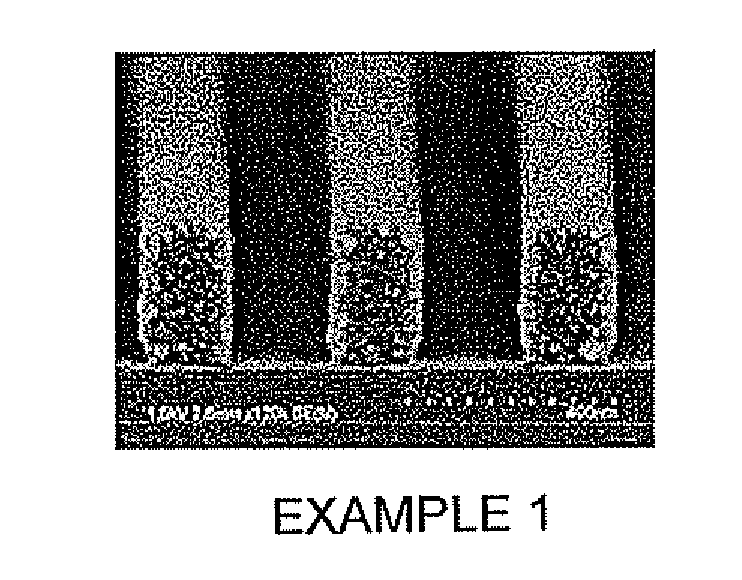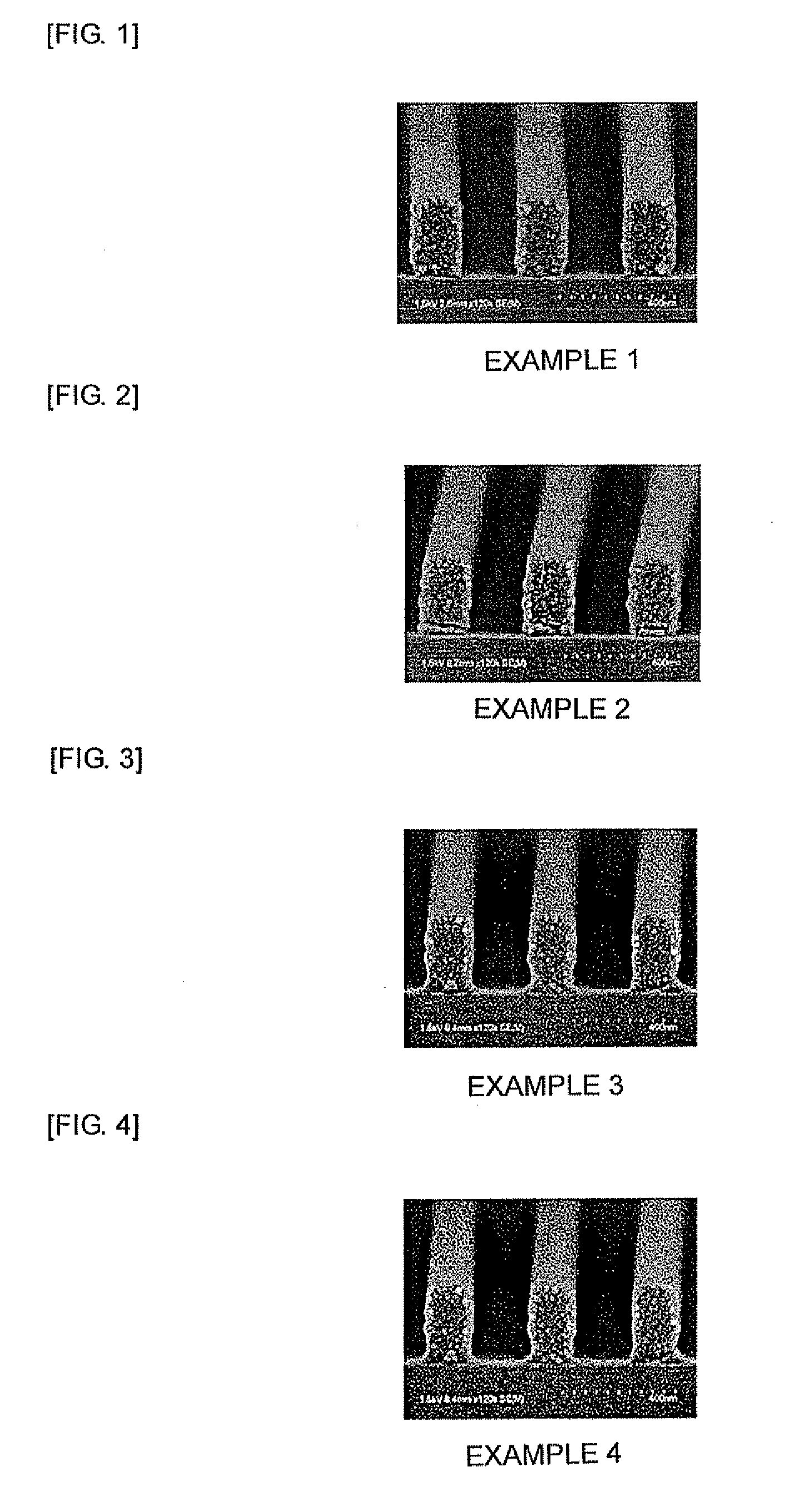Composition for formation of photosensitive resist underlayer film and method for formation of resist pattern
a technology of photosensitive resist and composition, which is applied in the direction of photosensitive materials, instruments, photomechanical equipment, etc., can solve the problems of no specific means and effects of composition for forming photosensitive resist underlayer films, and achieve excellent solvent resistance, reduce the generation of residues, and improve the effect of shape control
- Summary
- Abstract
- Description
- Claims
- Application Information
AI Technical Summary
Benefits of technology
Problems solved by technology
Method used
Image
Examples
synthesis example 1
[0082]In 37.1 g of tetrahydrofuran, 15.0 g of 4-hydroxyphenyl methacrylate (Showa Highpolymer Co., Ltd.) and 0.9 g of dimethyl 2,2′-azobis(isobutyrate) (Wako Pure Chemical Industries, Ltd.) were dissolved, and the solution was added dropwise into 26.5 g of heated and refluxed tetrahydrofuran in a nitrogen atmosphere. After the completion of the dropwise addition, the whole was reacted for 18 hours while maintaining heating and reflux. Then, the reaction mixed solution was poured into hexane for precipitating a polymer. Next, the polymer was dried under reduced pressure to afford 14.1 g of a polymer of Formula (13). GPC revealed a weight average molecular weight of 24,700 in terms of polystyrene.
synthesis example 2
[0083]In 32.6 g of tetrahydrofuran, 5.5 g of 4-hydroxyphenyl methacrylate (Showa Highpolymer Co., Ltd.), 7.7 g of ethyladamantyl methacrylate (Osaka Organic Chemical Industry Ltd.), and 0.79 g of dimethyl 2,2′-azobis(isobutyrate) (Wako Pure Chemical Industries, Ltd.) were dissolved, and the solution was added dropwise into 23.3 g of propylene glycol monomethyl ether heated at 70° C. in a nitrogen atmosphere. After the completion of the dropwise addition, the whole was reacted for 14 hours while maintaining the temperature at 70° C. Then, the reaction mixed solution was poured into hexane for precipitating a polymer. Next, the polymer was dried under reduced pressure to afford 10.8 g of a polymer of Formula (14). GPC revealed a weight average molecular weight of 10,150 in terms of polystyrene.
synthesis example 3
[0084]In 28.8 g of tetrahydrofuran, 5.5 g of 4-hydroxyphenyl methacrylate (Showa Highpolymer Co., Ltd.), 6.0 g of ethylcyclohexyl methacrylate (Daicel Chemical Industries, Ltd.), and 0.79 g of dimethyl 2,2′-azobis(isobutyrate) (Wako Pure Chemical Industries, Ltd.) were dissolved, and the solution was added dropwise into 20.6 g of heated and refluxed tetrahydrofuran over 6 hours in a nitrogen atmosphere. After the completion of the dropwise addition, the whole was reacted for 16 hours while maintaining heating and reflux. Then, the reaction mixed solution was poured into hexane for precipitating a polymer. Next, the polymer was dried under reduced pressure to afford 9.5 g of a polymer of Formula (15). GPC revealed a weight average molecular weight of 14,600 in terms of polystyrene.
PUM
| Property | Measurement | Unit |
|---|---|---|
| reaction time | aaaaa | aaaaa |
| reaction time | aaaaa | aaaaa |
| pore size | aaaaa | aaaaa |
Abstract
Description
Claims
Application Information
 Login to View More
Login to View More - R&D
- Intellectual Property
- Life Sciences
- Materials
- Tech Scout
- Unparalleled Data Quality
- Higher Quality Content
- 60% Fewer Hallucinations
Browse by: Latest US Patents, China's latest patents, Technical Efficacy Thesaurus, Application Domain, Technology Topic, Popular Technical Reports.
© 2025 PatSnap. All rights reserved.Legal|Privacy policy|Modern Slavery Act Transparency Statement|Sitemap|About US| Contact US: help@patsnap.com



